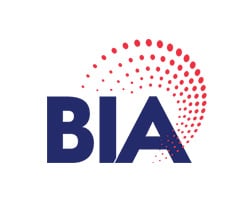Brand image is the first impression that clients receive of your company and has a great deal of influence on your brand’s overall market perception.
Market perception is essentially the overall consumer attitude towards your brand, taking into consideration the products, service experience, and even how your company fares compared to your competitors.
Brand image and market perception work hand in hand with one another. Your brand image is not only the first impression of your company that the market receives, it also includes the lasting values and practices that support your overall brand. The market perception of your brand can make or break your business’s growth, and when utilized properly, it can attract both new and repeat customers.
Build Your Brand Image
Building your brand image requires a deep dive into exactly who your audience is, how you want them to perceive you, as well as how you plan to set your brand apart from the rest of the industry. This can be done in a variety of ways, and one of the best steps to starting is by contacting a respected branding agency. From there, a branding agency can help you set a plan by asking the right questions during collaborative meetings. This will allow them to use their expertise to construct a branding strategy that will boost your business.
Tell Your Story
The first place to start when determining your brand image is the “buyer persona,” which is how you tailor your messaging and tone to appeal to your desired buyers. The buyer persona is not a fixed identity and will continuously evolve along with your company. The evolution of the buyer persona is driven by advancing technology and products available in modern day markets, and it pushes your company to stay ahead of the competition. Along with this, you will need to determine your brand “voice,” which is essentially the overall tone or attitude of your company. There are a few key details of your brand voice that can make or break its effectiveness, including how consistently it is used across your writing and how distinct it is to your brand compared to industry competitors. When used correctly, your brand voice makes your brand instantly distinguishable from others by being unique and exclusive to you.
Aside from the buyer persona and the brand voice you use to interact with your audience directly, building your brand story ties the details of your brand image into a nice, presentable package for consumers. Your brand story can range in anything from the origin story of your business to the day-to-day business operations, but one of the most impactful forms of brand storytelling is customer experience storytelling. Customer experience storytelling can boost your brand, because it provides reassurance and supporting evidence to potential clients who are determining whether your brand is right for them. It is one thing to assure potential and even returning customers that your business is the leader in the industry, but it’s another thing to have your satisfied customers reassure them of this. When you support your brand story with customer stories, the trust levels with your audience rise exponentially. Hearing exactly how your brand has helped other customers with similar issues to their own helps potential customers determine whether or not you are right for them. There is an inherit level of trust among consumers, so having that support boosts the overall trust in your brand.
Get Your Brand Noticed
If these components to building your brand image are not enough, you must also establish an overall brand awareness strategy in order to effectively remain relevant to your market. This is essentially your strategy on how you are going to make sure that your target audience stays aware of your brand and its services. Depending on your company, and your goals, this can be done via organic channels which include:
- Social media posts
- Content marketing
- Display advertising
- SEO
- Email marketing
Organic channels of brand awareness are more information based, often including promotions or prompts to learn more, and generally pass on a bit more information with your audience than a simple advertisement. An alternative method to creating brand awareness is through paid channels which involve paid ads on display platforms – like Google, Facebook, Pinterest, etc. The purpose of these methods is to intermittently remind your audience of your brand’s presence, and in order for them to be successful, your brand must also understand how to effectively collect the data it receives from these strategies and then use that data to inform brand image improvements.
Although this is a form of audience engagement, it should not be the only type of brand exposure your audience receives. Using brand awareness tactics may draw consumers in, but the key to getting their business and retaining it is through consistent engagement. Any company can run ads and schedule social media posts, but not everyone can maintain clear and open communication pathways with their customers. Connecting with your audience in real time can boost their perception of your brand and will make them feel comfortable knowing that your company is open and approachable, and also receptive to customer comments and feedback. This can be done in a myriad of ways such as:
- Responding to social media comments
- Responding to reviews – good and bad
- Offering real-time messaging features for customer service
When you make the effort to continually engage customers, they are more likely to not only do business with you in the first place, but are also more likely to return with additional business and refer others. By regularly engaging your customers through consistent responses and communication, you are also able to gather constructive feedback on your brand and where customers feel you do well and where they feel you could improve.
By establishing your brand image through careful internal reflection and consumer criticism, with help from an experienced branding agency, your brand will have a stable foundation under it to support growth. The brand image is so much more than just its outward appearance, it ultimately dictates how the market perceives your business.
Why Market Perception is Important
As noted, market perception is how your audience or industry views your company both compared to the competition, and standing alone. This perception is ever evolving and relies heavily on how solid of a foundation your brand image provides. When you have a strong foundational brand, you are already presenting yourself as a cohesive, straight-forward business and are helping to take out the “guess work” clients must otherwise do to understand what your brand is all about. Market perception can have a major influence on your business, because it can influence potential customers’ opinions of your company before they even have a chance to experience your brand for themselves. If your brand has little to no recognition within your industry, chances are it is not going to be a frontrunner when it comes to decision making time for clients. However, if your brand has a known market presence, clients are more likely to be attracted and will be more inclined to, at the very least, inquire to know more.
Market perception can be gauged through a variety of ways, but some of the easiest methods to gather data about how the market perceives your business are the same methods used to establish your brand image. These two concepts go hand in hand across the board for any business, and when used correctly, can pose a great advantage to staying ahead of the competition when it comes to marketing your company.
The first step to determining how your brand is perceived by the market is by establishing brand awareness. As you know brand awareness is what drives and maintains customer interest and traffic. Understanding how effective your brand awareness strategies are is crucial to being able to productively alter and change them and foster positive market perceptions. If you have unsuccessful branding awareness campaigns, then there will be little to no market perception data available because your brand is not getting enough exposure to your audience. On the flip side of this, there is also a such thing as too much brand awareness which can result from having too broad of a target audience to the point where the market perception data is not accurate due to the saturation of audiences which are not close matches to your brand’s specific “buyer persona.”
When determining the “buyer persona” while establishing your brand image, you are also establishing the audience from which you will gather market perception feedback. Your audience is your market, and targeting the correct buyers is crucial to getting an accurate understanding of where you stand when it comes to the competition. If you are targeting your brand image towards the wrong audience, it is more likely to be perceived in a less favorable light than it would be when targeting a more accurate, specific set of buyers. If your audience is not interested in your industry in the first place, then they are unlikely to engage with any sort of branding efforts you are putting forth, thus producing a negative market perception.
What This Means for Businesses
Brand image and market perception co-exist in the business branding world, and both are used to inform one another and the overall brand as a whole. Without a clear, distinct brand image, there is no ability to gather market perception data. Without market perception data, there is no seamless way to inform branding image changes that have the goal of influencing the overall consumer market’s opinion towards your brand. Market perception will tell you how successful your branding image is and show you where improvements can be made to boost your business.
Regardless of where your business is when it comes to brand image, there is always something to be gained from staying up to date on the trends and changes going on within your industry. Every consumer is constantly looking for the highest quality service, product, and experience for the best price, which is why it is important to keep up when it comes to your brand. Being able to represent your brand in a cohesive, consistent manner makes your brand appear professional, polished, and successful to your consumers. Every business has a brand image, regardless of whether it was intentionally crafted or just the result of day-to-day operations and decisions. Along with a brand image, every brand also has a distinct market perception of their business. The two are interconnected, and if you want to improve your brand’s market perception, then you must first work on your overall brand image. Likewise, if you want to improve your brand’s image, you must first consult it’s overall market perception.
The best way to determine the right course of action for your business is to address both your brand image and how the market perceives it is by contacting an experienced branding agency. An expert such as those on the Millennium Agency team will be able to accurately determine what the overall perception of your brand is at that given time, and from there they can custom tailor a brand image strategy that will not only increase how well the market perceives you, but will also attract traffic and grow your business. Ignoring your brand’s market perception and neglecting your brand image can result in your business falling back into the shadows. The sooner you establish your brand image, the sooner your market perception becomes stable before improving exponentially.
About Millennium Agency
Millennium Agency is a national, award-winning boutique branding, messaging and strategy marketing firm for the B2B technology and manufacturing sectors. A top-led women-owned business, we take your brand and vision seriously and build a strategy that helps drive brand success. Our expert team unites creative branding, storytelling and data analytics to accelerate your business growth. With offices in Boston and New Hampshire, and a worldwide presence, the professionals at Millennium Agency would like to learn more about your business.


























